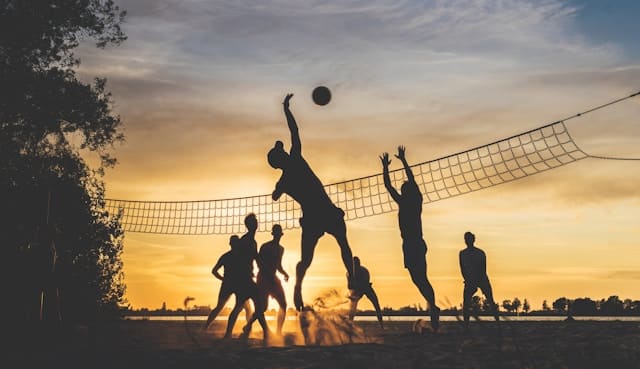What’s the Most Effective Approach for Returning to Play After a Shoulder Dislocation in Volleyball?

Shoulder dislocation is a widespread injury among athletes, especially those in the domain of volleyball. Fast-paced, high-intensity, and shoulder-intensive sport, factors such as improper technique, excessive force, or an unfortunate fall can lead to a painful and debilitating dislocation. This article will address the optimum approach for returning to the game post such an injury, focusing on aspects like rehabilitation, exercises, and physical preparation.
Understanding Shoulder Dislocation and Instability
The shoulder joint, primarily a ball-and-socket structure, is the most mobile joint in the human body. However, this mobility can sometimes cause instability, making it prone to injuries like dislocation. When the ball, or the head of the upper arm bone, gets forced out of the shoulder socket, a dislocation occurs. This injury often leads to severe pain and loss of arm movement.
Have you seen this : How Can GPS Tracking Data Inform Substitution Strategies in Soccer?
According to a study published in PubMed, volleyball players are at higher risk for shoulder instability and dislocations due to the sport’s nature. The repeated overhead motions, like serving and spiking the ball, place immense stress on the shoulder joints, which may result in dislocation. It is essential to understand the underlying causes and risk factors of this injury to plan an effective return to the sport.
The Rehabilitation Process
Rehabilitation plays a critical role in an athlete’s journey back to the sport after a shoulder dislocation. The severity of the dislocation and the athlete’s overall health will determine the length and intensity of the rehabilitation process. The primary aim of rehabilitation is to restore shoulder strength, flexibility, and stability to prevent further injuries.
Also read : How Does the Use of Compression Garments Impact Muscle Recovery in Distance Runners?
As per PubMed, the rehabilitation process typically involves three stages. The first stage focuses on reducing pain and swelling. The second stage involves gentle exercises to restore motion and flexibility. The final stage is dedicated to strengthening exercises to regain shoulder stability. It’s important to note that each stage is crucial, and skipping or rushing through any stage could impede recovery.
Exercises for Shoulder Rehabilitation
Exercises form a significant part of the rehabilitation process. They aim to strengthen the shoulder muscles and improve joint mobility. However, these exercises should be performed under the guidance of a certified physical therapist to avoid any further injury.
One common exercise for shoulder rehabilitation is the Pendulum exercise. In this exercise, you lean over and gently swing your arm, mimicking the movement of a pendulum. This exercise helps improve joint mobility and reduce pain.
Another effective exercise is the External Rotation with a Resistance Band. This exercise strengthens the rotator cuff muscles, which are crucial for shoulder stability.
Surgical Intervention and Post-Surgery Rehabilitation
In some cases, especially recurrent dislocations, surgical intervention might be necessary to restore shoulder stability. Surgery might involve repairing torn or stretched ligaments to ensure they hold the shoulder joint in place more effectively.
Post-surgery, the arm is usually immobilized with a sling for a few weeks. This is followed by a careful and gradual rehabilitation program, guided by a physical therapist. It involves a combination of physical therapy sessions and at-home exercises to strengthen the shoulder and improve flexibility slowly.
Making a Safe Return to Sport
The ultimate goal of every athlete after an injury is to return to their sport. However, a safe return to volleyball after a shoulder dislocation requires patience, persistence, and precaution. It’s not just about healing the injury but also about preventing future ones.
Preventative strategies like warming up properly before playing, using correct techniques, maintaining overall fitness, and continuing with strengthening exercises even after recovery can help. A gradual return is recommended, starting with light tosses before moving on to serving or spiking the ball.
Shoulder dislocations can be a major setback for volleyball players. However, with the right approach encompassing understanding the injury, following a structured rehabilitation process, doing the right exercises, considering surgical options when necessary, and making a gradual return to the sport, athletes can effectively overcome this hurdle. Remember, every injury heals at its own pace, so it’s important to listen to your body and not rush the process.
Physical Therapy and Its Importance
Physical therapy is an integral part of the healing and recovery process after a shoulder dislocation. It is an effective non-surgical approach that helps in managing pain, restoring function, improving mobility and preventing future dislocations. According to PubMed, routine physical therapy sessions significantly enhance the rate of shoulder recovery after dislocation.
A well-structured physical therapy program starts with the assessment of the shoulder’s condition and the person’s overall health. This assessment includes checking the range of motion, strength, stability, and pain level in the shoulder. Based on this assessment, the physical therapist designs a program tailored to the individual’s needs.
The initial phase of physical therapy focuses on decreasing inflammation and pain using various techniques like ice application, gentle range of motion exercises, and the use of pain-relieving modalities. As the pain subsides, the focus shifts to improving the range of motion and strength of the shoulder.
Exercises like pendulum swings, external rotations with resistance bands, and shoulder stabilization exercises are routinely incorporated into the program. The physical therapist continuously monitors progress and adjusts the program based on the individual’s improvements.
Physical therapy also plays a vital role in educating athletes about their injury, the healing process, and how to prevent future dislocations. This knowledge is empowering and helps the athlete to take an active role in their recovery process.
Conclusion: The Journey to Return to Play
The road to recovery and return to play after a shoulder dislocation can be demanding and challenging for volleyball players, but with the right approach and mindset, it is fully achievable. The first step is gaining a thorough understanding of the nature of a shoulder dislocation and its effects on the shoulder joint.
The rehabilitation process should be carefully followed under the guidance of trained medical professionals. Rest, medication, physical therapy sessions, and home exercises are all key components of the recovery journey. In severe or recurrent cases, surgical intervention may be necessary to achieve and maintain shoulder stability.
Exercises that improve range of motion, increase strength, and promote shoulder stabilization are crucial in the rehabilitation process. The role of physical therapy is paramount in guiding these exercises and ensuring they are performed correctly and safely.
Finally, a safe and successful return to sport is not just about recovery but also prevention. Athletes should be taught the importance of proper warm-up, correct playing techniques, maintaining overall fitness, and continuing strengthening exercises even after the injury has healed.
In conclusion, the most effective approach for returning to play after a shoulder dislocation in volleyball is a holistic one that includes understanding the injury, following a structured rehabilitation process, staying patient, being persistent, taking precautions, and most importantly, listening to the body. It is not a race, but a journey that every athlete must undertake at their own pace. The ultimate goal is not just to return to the sport, but to do so stronger, healthier, and more resilient than before.
